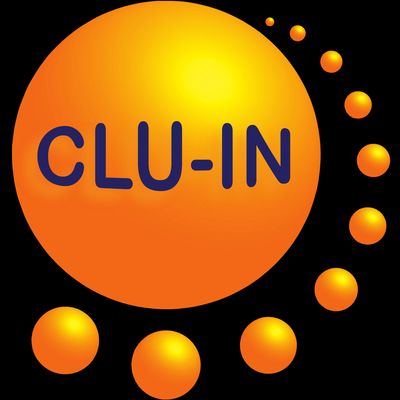Since 1998, The Contaminated Site Clean-Up Information (CLU-IN) website has presented Internet Seminars covering a wide variety of technical topics related to hazardous waste characterization, monitoring, and remediation. For select seminar topics offered since 2012, we are making complete video recordings available through our archives. This feed contains all video seminars archived in the last 12 months. For a complete list of seminars archived since 2000, please visit http://www.clu-in.org/live/archive/. Our Rehabilitation Act Notice for reasonable accommodation is available at http://www.clu-in.org/training/accommodation.cfm. CLU-IN was developed by the U.S. Environmental Protection Agency (EPA) but is intended as a forum for all waste remediation stakeholders. For more information and to view upcoming live offerings, please visit http://www.clu-in.org/live/. For a complete list of RSS feeds available on CLU-IN, please visit http://www.clu-in.org/rss/about/.
http://www.clu-in.org/live/archive
Biogeochemical Interactions Affecting Bioavailability for in Situ Remediation: Session I - Innovative Approaches for Chlorinated Compound Bioremediation in Groundwater (Apr 22, 2019)
This webinar series will feature individual research projects funded by the NIEHS Superfund Research Program (SRP). In 2013, the SRP initiated a targeted research program to better understand how contaminants in the environment are affected by complex biological, geological, and chemical processes. By understanding these complex interactions, we are better equipped to optimize remediation strategies and, therefore, improve science-based decision making for site management, priority-setting, and remedy selection. The individual research project grants support problem-solving research on the mechanisms of biogeochemical interactions that may impact remediation of contaminated soil, sediment, surface water, or groundwater. In session 1, we will hear about SRP-funded individual research projects at Johns Hopkins University, University of Tennessee, and University of California, Berkeley. The first session will also include a brief introduction to the targeted research program and cohort of awardees. Researchers led by Edward Bouwer, Ph.D., at Johns Hopkins Whiting School of Engineering are evaluating a novel technology — a flow-through barrier containing granular activated carbon coated with anaerobic and aerobic microorganisms — to see if it can completely break down chlorobenzenes and benzene contaminants, which are known or suspected carcinogens. The researchers seek to understand the environmental processes and conditions that influence interactions among contaminants and the barrier to improve its effectiveness in contaminated groundwater. Laboratory and field tests are being conducted at the Standard Chlorine of Delaware, Inc. Superfund site where dense non-aqueous phase liquid (DNAPL) chlorobenzene contamination is present in wetland sediments and groundwater. For more information, please visit: Dual-Biofilm Reactive Barrier for Treatment of Chlorinated Benzenes at Anaerobic-Aerobic Interfaces in Contaminated Groundwater and Sediments. At the University of Tennessee, Frank Loeffler, Ph.D., and his research team are investigating the role of the microbial community for supplying specific nutrients called corrinoids, which organohalide-respiring Dehalococcoidia require to dechlorinate and detoxify solvents such as tetrachloroethene (PCE) and trichloroethene (TCE). The team is designing and validating the B12-qChip — an innovative, high-throughput quantitative PCR tool — that can be used to recognize when the bioavailability corrinoids limits dechlorination activity. Using samples from Third Creek, a polluted creek in Knoxville, Tennessee, they are conducting detailed studies that combine cultivation-based approaches, high-throughput sequencing, bioinformatics analyses, and state-of-the art analytical procedures to reveal the best biogeochemical conditions for bioremediation. For more information, please visit: Biogeochemical Controls over Corrinoid Bioavailability to Organohalide-Respiring Chloroflexi. Assistant Project Scientist Shan Yi, Ph.D., will describe a project at the University of California, Berkeley led by Lisa Alvarez-Cohen, Ph.D., using a combination of molecular, biochemical, and analytical tools to evaluate how microbes used for trichloroethene (TCE) bioremediation interact with co-existing organisms in various geological, chemical, and biological conditions. The researchers are constructing simplified groups of microbes living symbiotically that they will expose to stresses such as changes in salinity as well as the introduction of potential competitive electron acceptors to the system (e.g., sulfate ions) to see how TCE bioremediation is affected. They will also combine intercellular data gained from both microarray and RNA sequencing techniques to develop mechanistic models that describe the effects of geochemical parameters on bioremediation. For more information, please visit: Metabolic Interactions Supporting Effective TCE Bioremediation under Various Biogeochemical Conditions. To view this archive online or download the slides associated with this seminar, please visit http://www.clu-in.org/conf/tio/SRPPIR9_042219/
